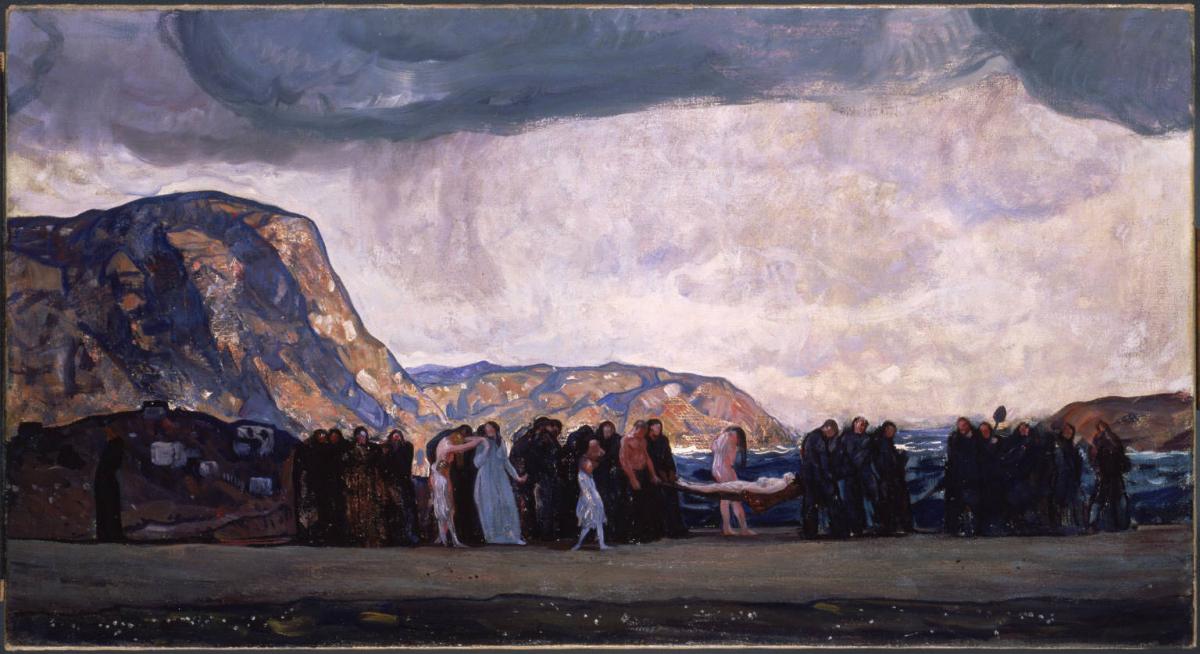Burial of a Young Man
Rockwell Kent ( c. 1908-c. 1911 )

Although grounded in the American realist tradition, Rockwell Kent rarely painted urban scenes like his contemporaries George Bellows, Edward Hopper, and John Sloan. Instead he drew inspiration from nature’s grandeur and humanity’s relationship to its monumental forces. Burial of a Young Man was begun in 1908 while the artist was living on Monhegan Island in Maine. In a letter that year to his future wife, Rockwell Kent wrote: “I have been painting on a picture that I started last spring or rather last winter…of a funeral or burial at Monhegan, I have completely repainted the picture and I think it is very successful….It looks to me very solemn and grand.”
The bleakness of the landscape, which recalls the headlands of Monhegan, and the dramatic sky with its dark rolling clouds create a powerful image of nature overwhelming man. The shallow band of figures that make up the burial scene stretches the length of the canvas. The undulating line of the mourners’ arms and hands, the presence and placement of the children, and the draped clothing reveal Kent’s study of Greek and Roman monuments, like the processional frieze on the Augustan Ara Pacis in Rome.
Burial of a Young Man may have been among those finished after his return to the island in December 1910. It was first exhibited in New York in 1911 to rave reviews. Critics cited the unusual blending of quotations from classical art with a modern sensibility and style. Phillips, who recognized this polarity in Kent’s work, stated in 1928 that Kent was “at heart a Greek but with many modern complications.”
When he purchased the somber Burial of a Young Man in 1918, Phillips was undoubtedly responding in part to the recent deaths of both his father and brother in the 1918 influenza epidemic, and the horrors of World War I. Phillips selected the painting for the December 1918 Allied War Salon; however, he was unable to persuade the organizing committee that it was “a powerful and by no means harmful war picture.” It was not accepted for the exhibition, but continued to hold special significance to Phillips for the rest of his life.